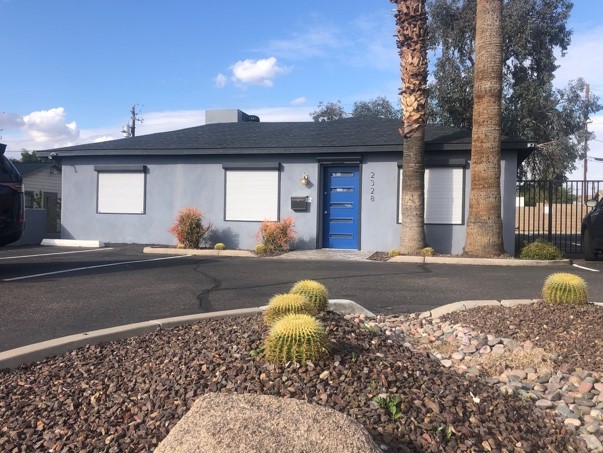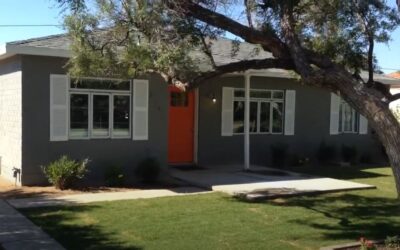If you have an IRA or a 401k from a previous employer, you may be able to utilize it to grow your retirement funds quicker and with more control by applying your real estate expertise, rather than relying on the stock market, which is outside of our control.
Do You Want More Control Over Your Retirement?

After watching the stock market get pushed from 1995 – 2008 by events completely out of my control, I decided that the best way to protect and grow my own retirement account was to put it to work where I trusted it to be – in my control. For a dozen years, I had seen volatility in the financial markets.
First, there was the run-up of tech stocks in the late 1990s; then the Y2K scare; followed by the inevitable bursting of the dot com bubble in 2001-2002. The market raced up again until the near-collapse of the banking industry amid corporate greed and the Great Recession, which hit the United States in 2007 and led to a global financial crisis.
As I navigated through those events, I felt that I had no real knowledge or control over the stocks and mutual funds that my hard-earned monies were invested in. I preferred to see my money invested in a hard asset like land or a house, which I can 1) buy below market (with equity built-in), 2) have something that always has intrinsic value (land), and 3) have an asset that can be insured against losses (houses/structures). Add some expertise, like forcing appreciation with targeted improvements, and I could really create some equity and value in my retirement portfolio.
You may have come to a similar conclusion, or perhaps you are weighing your retirement investing options now. Read on, my friends…
Risk / Reward Assessment
There are risks with anything that we choose to invest in, so a personal risk-reward assessment is required to develop our game plan for retirement. That assessment of risk versus reward differs for each of us, based on our expected years to retirement, our health, our projected expenses, and our investment-related past experiences. For instance, younger folks in excellent health will typically take on more risk, for a shot at a higher reward, than older folks in poor health.
People who have a certain expertise in an area, will often naturally feel more comfortable investing in those areas. Uncertainty brings risk; while familiarity and achievement in an area bring higher comfort levels. I chose to roll my old corporate 401k’s, which were invested in mutual funds, into a Self-Directed IRA (SDIRA) that I could use to invest in deals/transactions where I had a greater degree of control and expertise.
I am a full-time real estate investor/developer, having done thousands of deals, and I love it! Once I scale back and semi-retire, I plan on still doing deals and investments, because I enjoy it and it will allow me to continue helping others. In addition, since I am actively involved in the field, I see a lot of deal flow, which allows me to find excellent deals. For these reasons, along with my expertise in this area, I am often comfortable taking a little more risk than the typical person my age might take. Your situation may be different.
Each of us needs to assess this on our own. The key is to find the type of investments where you can feel confident that you can reach your goals, without taking on undue risk. For most of us, that’s somewhere between stashing our money in a savings account at the bank and betting it all on black at the casino. One method is very safe but earns <1%, which means you’re losing money against inflation; and the other method brings great upside but also massive risk. Take some time to think through the risk/reward concept as you review the potential investment vehicles below.
Finding a Custodian
There are several reputable companies that offer custodial services for SDIRAs. Such custodial services are required under U.S. rules governing SDIRAs. I chose Vantage (www.VantageIRAs.com), primarily because they are headquartered near my home in the Phoenix area, and they offer excellent (and free) training/education in their North Phoenix offices. You can typically complete the set-up process within 1-2 weeks and be ready to start investing. I took it an extra step and had my SDIRA account take ownership of a newly formed LLC, providing me with true checkbook control over my retirement funds.
I have had my SDIRA since 2011, and I love the relative freedom that it gives me to invest my retirement funds in assets I truly believe in. I am very pleased with how my account values have grown, and the support that Vantage provides when needed. Retirement accounts are governed by IRS rules, so make sure you read up on them. For instance, these investments must be for the benefit of the IRA, and not for personal profit or gain. In addition, there can be no self-dealing, plus there are disqualified individuals whom your IRA cannot transact with. Click here for a list of FAQ’s.
A list of IRA custodians can be found at NuWire Investor.

What Types of Real Estate Should You Invest In?
If you have 5+ years left before retirement, you can afford to be a bit more patient with your SDIRA investments. Depending on the amount of your available funds, you can diversify within your portfolio, perhaps buying a parcel of land, doing a hard money loan, and buying a rental property. There are lots of areas you can invest in, but we’ll elaborate briefly on a few of them that I particularly like:
1) Land – your SDIRA can be the right vehicle to purchase and hold raw land for long-term appreciation. If you are a full-time investor, you may be reluctant to spend your ‘active working capital’ on land purchases, as you may need to turn your money quicker and create shorter-term returns. But by using some of your SDIRA funds in raw land, you can take advantage of long-term appreciation, most likely with minimal holding costs and very little management effort.
While there are exceptions (such as leasing land to a farmer), usually vacant land is not a cash-flow vehicle, but rather a strategic play for the future. For instance, 40 acres in the middle of nowhere would likely be a speculative investment that may pan out years from now but isn’t likely to produce cash flow or income in the short run.
On the other hand, purchasing a vacant infill lot in the middle of town has many more viable exit strategies. Perhaps you can lease it out for storage. Maybe you can put a billboard or a cellular tower on it. You could wholesale it to a builder. Or re-zone it for its highest and best use. And then sell it or develop it yourself. You get the idea… Either type of land purchase could be a good fit for your IRA.
2) Hard Money Loans – one of my favorite ways to invest with my SDIRA is via hard money loans on non-owner occupied properties. Using this vehicle, you become the lender and earn a passive interest rate that is typically above that of conventional loans. These loans are usually collateral-based, meaning that you underwrite the loan based primarily on the value of the real property, as opposed to the borrower’s credit score and reserves.
Your borrower is likely to be a real estate professional themselves who needs to purchase the property quickly and who may be self-employed – two criteria that make it difficult to use conventional bank financing. This borrower is likely to be in the business of Fix/Flip, so needs time to remodel and sell the property; or in the business of Buy/Hold, needing time to remodel and refinance the property into longer-term, lower-rate financing. To compare and contrast typical conventional bank financing with hard money loans, the following table gives a general view:
| Conventional Loans | Hard Money Loans | |
| Lender | Bank or Credit Union | Individual or Company |
| Typical Borrower | Owner Occupied | Non-Owner Occupied |
| Underwriting Focus | Borrower AND Property | Primarily the Property |
| Underwriting Speed | 14 – 28 days | 1 – 5 days |
| Loan-to-Purchase price | LTP can approach 100% | Can approach 100% |
| Loan-to-Value | LTV can approach 100% | 70 – 75% |
| Term of Loan | 15 – 30 years | 6 months to 2 years |
| Interest Rates (2020) | 3 – 5% | 7 – 14% |
| Repayment | Monthly P&I | Interest-only or deferred interest |
| Security | Subject Property | Subject Property |
| Borrower PGs? | Yes | Sometimes |
| Ability to Negotiate? | No | Yes, more flexible |
The information in the above table is not static and absolute. This is intended to give a summarized comparison of how most loan programs tend to operate. Different hard money lenders deviate widely in their terms and risk assessment. When I am lending money, I sometimes do 2nd and 3rd mortgages, as long as the project makes sense and I am confident I have a valid exit strategy if the payments aren’t made. There are lots of lenders that aren’t comfortable doing that, and that’s okay too.
3) Rental Property – Many folks purchase rental properties in their SDIRAs. If the right property is chosen, you can often receive strong cash flow AND appreciation from the underlying asset. This buy and hold strategy is popular among investors of many ages and career paths. We generally visualize residential properties (houses, apartments, condos, vacation rentals) when we think of rentals. But commercial properties like offices and shopping centers are also an option here for the more experienced investors, although they can be riskier.
You don’t necessarily need the entire purchase price to be paid in cash by your IRA. You can leverage your purchase with debt if you like, but here are two important considerations. First, not all lenders will lend to an IRA, plus the loan needs to be non-recourse (can’t be guaranteed by you; must be solely collateral-based) so are often at lower LTVs (think ~70%). Second, if you leverage your purchase with a loan, you will likely trigger UBIT (Unrelated Business Income Tax), which may create a tax event for you. Consult your tax advisor before taking out debt on an IRA purchase; an informative article can also be found at Forbes.com.
A key difference between investing with Hard Money loans and investing in rental property is the difference between being a lender and a landlord. Landlords need to manage, or pay someone to manage, the property, and have a large variety of tasks, such as finding tenants, leases, rent collections, repairs, paying property taxes and insurance, dealing with evictions and tenant replacement as necessary, etc.
Lenders avoid nearly all of that, other than the collection of payments. So while Rentals are considered a passive investing vehicle by many, it typically requires significantly more effort to manage a portfolio of rentals than it does a portfolio of loans. Your retirement portfolio may be well served to have a combination of loans, rentals, and other real estate investments, for diversification.
For more, see my blog about Buy and Hold investing here.

This is a small commercial office in Phoenix, AZ that I bought in my IRA, renovated, and now rent out on a NNN basis.
4) Notes – another fairly low maintenance strategy is to buy Performing Notes. That is, purchase a real estate Note that is already in place, with a seasoned payor, and step into cash flow that is secured by the underlying real estate. This can be a more advanced technique, so just like everything else, ensure that you have researched the area before diving in to invest.
Summary – Take Control!
SDIRAs can be powerful tools to help you build wealth and financial freedom for your retirement. The smart investor will first assess his/her risk tolerance. Then, once your SDIRA is set up and ready to go, follow your custodian’s advice as you locate and execute on your investments within your retirement account. And enjoy the extra control that this method affords you! J
Like most real estate topics, we are just able to scratch the surface in this article. Feel free to contact me to discuss your SDIRA situation.







